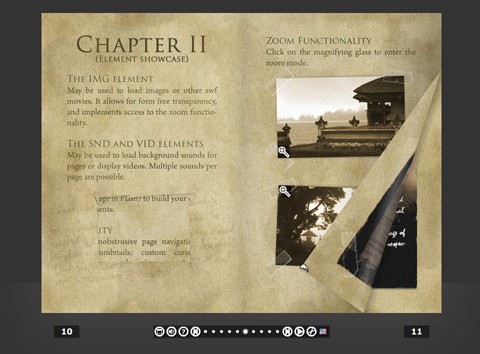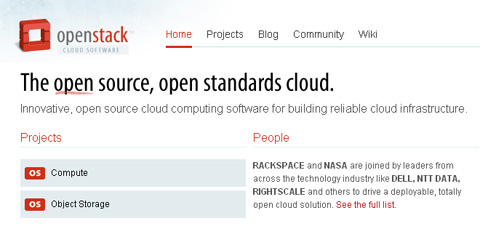Published by admin on 14th February 2011
Overview
Ample SDK is a standard-based cross-browser JavaScript UI Framework for building Rich Internet Applications. It employs XML technologies (such as XUL, SVG or HTML5) for UI layout, CSS for UI style and JavaScript with standard DOM/jQuery APIs for application logic. It equalizes browsers and brings technologies support to those missing any.
Advantages
Ample SDK is entirely written in JavaScript and thus it does not require any specific components installed in the browser to operate properly. It doesn’t modify the browser infrastructure but rather fills in the missing functionality. Go to Advantages to get more detailed information on the Ample SDK strengths.
Technologies
Ample SDK consists of a Ample Runtime (or Core), User Interface Markup Language implementations and a set of plugins. Ample Runtime implements DOM (Level 3), XML languages, objects facilitating work with XML, XSL-T, and a whole range of UI services. Every UI Markup Language implementation is included separately depending on your needs and specifics of the User Interface you build. Have a closer look at the Ample SDK Technologies.

amplesdk sample screenshot
Published by admin on 10th February 2011
FleaIM is web-based MSN messenger clone. With it you can do
- Register, sign in, automaticaly login
- Modify my profile, state, signature
- Send, receive message, flash & face icon
- Search, add, block, remove, sort contacts
- View, download chatting history
- Get sound notification of message coming, contact logging, etc.
- Maintain contact group

Published by admin on 6th February 2011
What’s an HTML5 Video Player?
“HTML5 Video Player” is a slightly ambiguous term. Browsers that support HTML5 video have video players built in, including a set of controls (play/pause etc.), so you don’t need anything else to play video in them. However, in addition to having a built-in player, browsers also give website developers access to the video functionality through a javascript API. This allows developers to build custom video player controls or other interfaces, that utilize the browser’s core video functionality.
Some javascript developers have packaged their custom player code into libraries, like VideoJS, and have made them available for others to use. When someone mentions an HTML5 video player, they are most likely talking about one of these custom libraries.
Why use an HTML5 Video Player?
Knowing that HTML5 browsers have a built in player, you might wonder why you’d need an additional library like VideoJS at all. There’s actually a number of reasons.
- Browser Version Compatibility. As the specification grows and changes, browser developers add new functionality to their players, and may even change the way an existing functionality is used. An example of this is when the spec changed from
autobuffer to preload, as the video tag attribute used to preload the video before the user hits play. Older versions of Firefox still use autobuffer, while newer versions require preload. VideoJS fixes this by checking for either attribute and triggering the one the browser needs.
- Additional Features. Not all built-in players support all the features you might expect from a video player, like volume control and fullscreen mode. Many HTML5 browsers, including older versions of webkit, don’t support Fullscreen Mode, so an HTML5 Video Player can simulate Fullscreen Mode by filling the browser window with the video.
- Consistent Design & Controls. Each browser has a different look & and feel to their built-in controls. If you want to present the same controls to every visitor you need an HTML5 Video Player.
- Browser bug fixes. Sometimes browser developers introduce bugs that they don’t realize and/or fix until a few versions later. Some of these bugs can actually be fixed through javascript, so it doesn’t matter if a user has an older version.
- Cross Browser compatibility fixes. Sometimes a feature of one browser breaks another. For instance, if you only include one video source for your video tag, and the browser doesn’t support it, it won’t fallback to the Flash player like you might expect. It will just stop and your video won’t play. VideoJS is able to get around this by forcing the browser to fallback to Flash. This is great if you want to only encode your video to the H.264 format (Safari, Chrome, iPad, iPhone, and Flash).

OpenStack is a collection of open source technologies delivering a massively scalable cloud operating system. OpenStack is currently developing two interrelated projects:
OpenStack Compute and
OpenStack Object Storage. OpenStack Compute is software to provision and manage large groups of virtual private servers, and OpenStack Object Storage is software for creating redundant, scalable object storage using clusters of commodity servers to store terabytes or even petabytes of data.
Published by admin on 30th November 2010
(E)2 Photo Gallery is a open source gallery built with Mootools Javascript Library the compact, modular, Object-Oriented javascript framework. Designed to allow you to upload your photos to a desired folder, tell the (E)2 Photo Gallery what folder to look at and it will automatically load the images using PHP.

Features
- Smooth Image Transitions
- Quick change between 4 designs
- Thumbnail Viewer
- Automatic Photo Detection
- Image Uploader Included
- Four Design Viewer Options
- No Database Needed
- Automatic Adjustment to Image Sizes
- Reads in Photo Meta Data (IPTC Info)
- Titles
- Descriptions
- Copyright Info
- Author
- Dynamically Built using PHP
- Easy Maintance
- Hide/Show Thumbnails
Published by admin on 9th July 2010
The Fisheye component is based around the concept of itemRenderer factories, just like the flex list and charting components. The goal is to use composition to separate behaviour from content, so you can reuse the basic fisheye effect across many different applications and uses. It???s available under the MIT Open Source license, so feel free to use it or modify it in your own applications. Check out the 2D Fisheye Demo, it looks really nice.
Quietly Scheming has many other components over there.

Published by admin on 3rd March 2008
MegaZine 3 is an open source, Flash driven pageflip engine. A pageflip engine is a tool which recreates the look and feel of actual books or magazines on the screen. To the right you can see an little, fully interactive example.
A more elaborate demo is available here. It includes GUI, video, sound and more.












